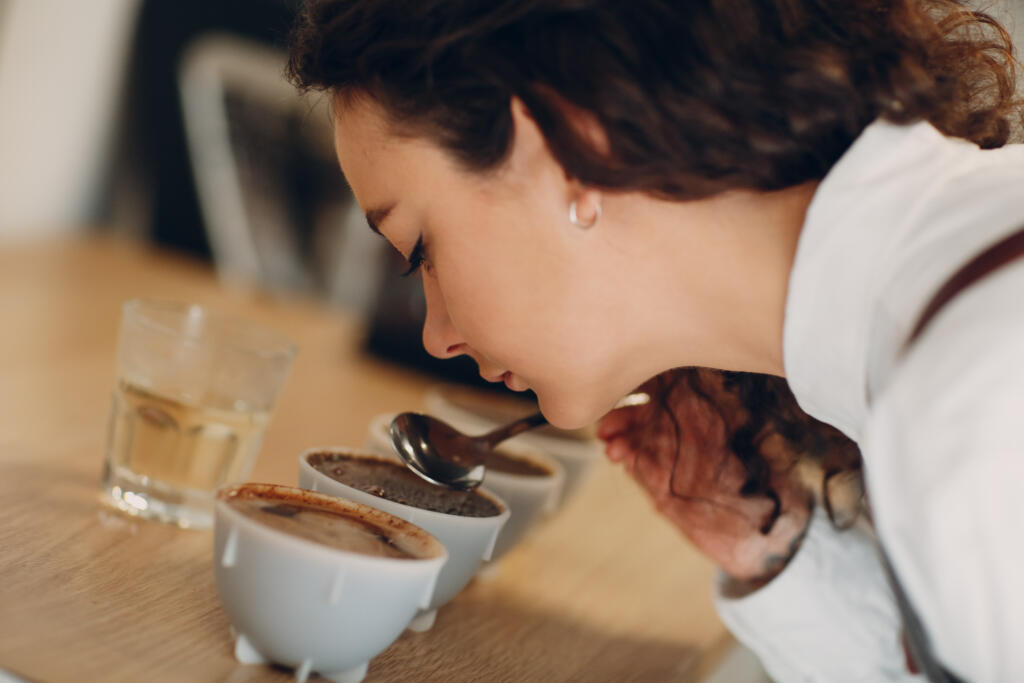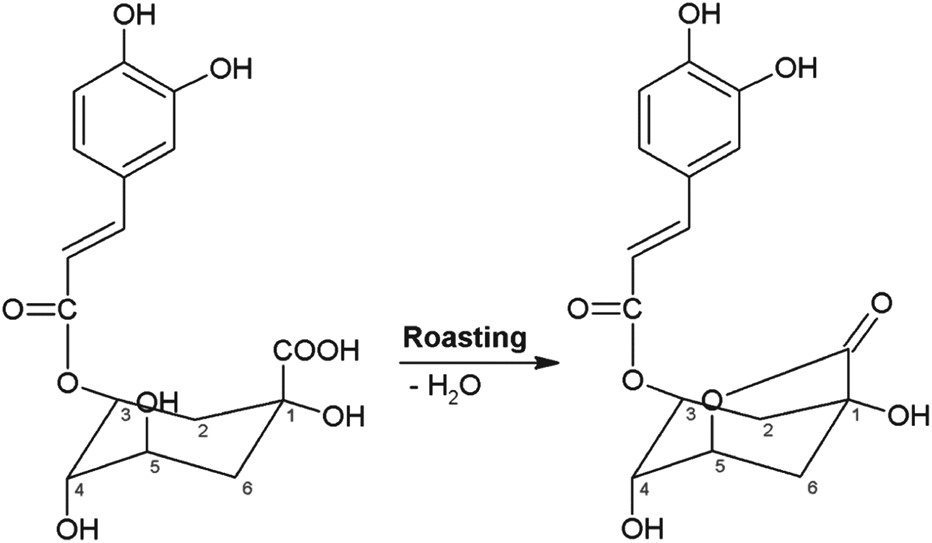Do you love the taste of coffee but don’t know why? Have you ever wondered what gives coffee its unique flavor and aroma?
The answer lies in a type of complex carbohydrate molecule called melanoidins. In this blog post, we’ll explore what melanoidins are and how they contribute to the flavor of your favorite coffee.

What are Melanoidins?
Melanoidins are nitrogen-containing polymers produced during the Maillard reaction’s last steps. These brown compounds are formed when sugars and amino acids combine during the roasting process of coffee beans, and their presence is extracted in the resulting coffee brew.
Melanoidins have a polysaccharide core, with arabinogalactans and glucose being the two main components. The amount of coffee melanoidins accounts for up to 15% of its dry matter, and these compounds are known for their high molecular weight and heterogeneous structure.
Polysaccharides and polyphenols are implicated in the reaction pathways owing to arabinogalactans and chlorogenic acids in green coffee beans. Melanoidins may provide health advantages, impact the flavor and color of coffee, and have physiological functions, according to research.

How Are Melanoidins Formed in Coffee?
Melanoidins are formed in coffee during the roasting process. Coffee bean components undergo structural changes during the roasting process, leading to the formation of melanoidins. Melanoidins are high molecular weight compounds generated by Maillard and chlorogenic acid incorporation reactions.
Additionally, indications were found that the formation of IMw melanoidin is mainly due to the Maillard reactions and chlorogenic acid incorporation reactions. Furthermore, hydroxycinnamates are known to have a role in coffee melanoidin formation due to their thermal and oxidative transformations.
Therefore, it is evident that understanding the formation mechanisms of these compounds is essential for understanding what goes on during the roasting process and how it affects the flavor and color of coffee.
Health Benefits of Melanoidins
Melanoidins present in coffee has many beneficial health benefits associated with them. Studies have shown they possess antioxidant, antimicrobial, anticariogenic, anti-inflammatory, antihypertensive, and antiglycative activities.
Nutritional studies suggest that melanoidins can act as a source of dietary fiber and influence energy intake
They also canxidation, which can help prevent other cardiovascular diseases. Furthermore, melanoidins play a role in modulating the texture and flavor of foods, which contributes to the stability and shelf-life of food products.
Research suggests that phenolic compounds are incorporated into melanoidin structures in coffee, cocoa, nuts, and fruits
Thus, these compounds may offer numerous advantages when consumed as a part of a healthy diet.
Chlorogenic Acid and Melanoidins
Chlorogenic acid is one of coffee’s main components involved in forming melanoidins. Studies have shown that polysaccharides, proteins, and chlorogenic acids are all involved in the formation of coffee melanoidins, and the degree of roast significantly impacts their properties.
Chlorogenic acid has also been linked to the ability of melanoidins to lower the blood glucose peak and insulin response, making them an important functional component of coffee.
Chlorogenic acid is also involved in the formation of melanoidins, which contributes to the red-brown color of coffee extract.
Furthermore, it is believed that the antioxidative activity of melanoidins is at least partially due to chlorogenic acids.
Physiological Activity of Melanoidins
Research has shown that melanoidins present in coffee, particularly those formed through the Maillard reaction, have a wide range of physiological activities.
These activities include antioxidant, antimicrobial, anticariogenic, anti-inflammatory, antihypertensive, and antiglycative properties. A study also showed that high levels of antioxidant activity were correlated with higher levels of melanoidins, total phenols, caffeic acid, and caffeine.
Furthermore, it was found that prolonged roasting of coffee beans increases the concentration of melanoidin-rich coffee brew and that this is associated with enhanced physiological activity. This suggests that prolonged roasting may increase the potential health benefits of coffee consumption due to the presence of melanoidins.

Factors Affecting the Formation of Melanoidins
The formation of melanoidins in coffee is affected by various factors, such as the type of roasting, the type of sugar used, and the number of amino acids present.
Furthermore, the thermal process applied to coffee beans also plays a role in melanoidin formation. For instance, higher temperatures and longer roasting times will form more melanoidins. Additionally, arabinogalactans seem to be more involved in melanoidin formation than galactomannans.
Finally, research has shown that coffee and sweet wine melanoidins show higher antioxidant activity than melanoidins isolated from beer. All these factors must be considered when studying the formation of melanoidins in coffee.
Conclusion
In conclusion, melanoidins are a beneficial component of coffee, contributing to its flavor and color, as well as its antioxidant potential and potential physiological activity.
The formation of melanoidins is affected by several factors, including the type of coffee beans used, the roasting process, and the brewing method. Understanding how melanoidins are formed in coffee can help to optimize the production of high-quality brews with desired flavor profiles and antioxidant properties.
Sources:
All of the information provided was based on several studies. Since these sources were used in multiple sections of this article, we decided to add these sources here for further reading.
- https://www.ncbi.nlm.nih.gov/pmc/articles/PMC8545818/
- https://pubs.acs.org/doi/10.1021/acs.jafc.9b03744
- https://www.sciencedirect.com/science/article/pii/B9780124095175000206
- https://pubmed.ncbi.nlm.nih.gov/22584883/
- https://pubs.rsc.org/en/content/articlelanding/2012/fo/c2fo30048f/unauth
- https://pubs.acs.org/doi/10.1021/jf800999a
- https://pubs.acs.org/doi/10.1021/jf073157k
- https://www.mdpi.com/2304-8158/8/2/68
- https://pubmed.ncbi.nlm.nih.gov/20949365/

Editorial Staff
The editorial staff at Crazy Coffee Crave is a team of coffee enthusiasts & Baristas who enjoy the one thing we all think about as soon as we get up in the morning. Trusted by thousands of readers worldwide.





